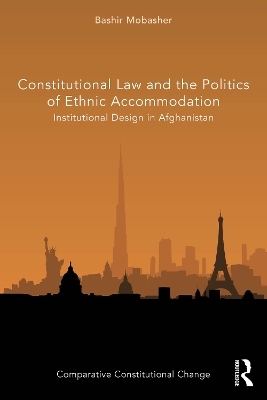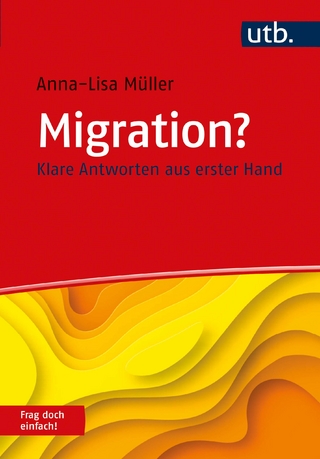
Constitutional Law and the Politics of Ethnic Accommodation
Routledge (Verlag)
978-0-367-71541-0 (ISBN)
This book explores whether the legal and political institutions of Afghanistan were able to incorporate diverse ethnic groups into the political process. Ethnic accommodation has gained central stage in the literature on institutional design and democratic consolidation.
However, some divided societies are more explored than others, and Afghanistan is one understudied country that is critically important for testing and improving our theories of institutional design in a democratizing, plural society. This work examines the Constitution of 2004 and those provisions of electoral laws and political party laws that together devised Afghan political institutions including those of the presidential system, unitary government, electoral systems as well as the party system.
It argues that due to their incongruence in design and effects, the Afghan political institutions failed to fully accommodate ethnic groups in the political process. This book adopts a holistic approach, while also paying careful attention to the details of each of the individual pieces of political institutions designed by the Constitution of 2004. Taken together, this approach yields insights into the boundaries and interactions of institutional design and how their interactions hinder or advance ethnic accommodation in varying contexts.
The book will be essential reading for academics, researchers and policy makers interested in constitutional law and politics.
Dr. Bashir Mobasher is a postdoctoral fellow at the American University’s Department of Sociology and a lecturer of political science at the American University of Afghanistan (AUAF).
Introduction: Ethnicity, Constitution, and Accommodation in Afghanistan
Identifying the Problem
The Search for an Explanation
A Way to Explore
Establishing the Parameters: Ethnic Accommodation
Organization of This Book
1 A Failed Nation or a Failed Constitution?: An Insight from the Inside of Afghanistan
Introduction
I. What Afghanistanologists Had to Say About Afghanistan
II. Were Afghans Anti- Democratic?
III. How Divided was Afghanistan as a Country and a Nation?
What did the Elites Say?
IV. A Socially Divorced Constitution
Conclusion
2 The Politics of Ethnic Accommodation under the Runoff System: A System of Coalition Making and Breaking
Introduction
I. Feature One: The 50 Percent Threshold
II. Feature Two: The Disastrous Second Rounds
III. Nonconcurrent Electoral Cycles
Conclusion
3 A Dysfunctional Parliament under the Yoke of the SNTV System: A System of Unrepresentative Representatives
Introduction
I. The Nuts and Bolts of the SNTV System
A. Feature One: Proportional Representation
B. Feature Two: Encouraging Personalistic Politics
C. Feature Three: Threshold- Free Elections
D. Feature Four: Encouraging the Fragmentation of Parties and Coalition
Conclusion
4 Constitutional Unchecks and Imbalances: Examining Ethnic Accommodation under a Strong Presidential System
Introduction
I. A Look at the Balance of Powers from Above
II. Legislative Powers of the President
1. Legislative Initiations
2. Veto Authority of the President
3. Soliciting Constitutional Review
4. Decree Authority of the President
5. Budget Planning
III. Executive Powers of the President vis-a-vis the House
1. Cabinet Formation
2. Endurance of Cabinet Members in Afghanistan
3. Changes in Administrative Units
IV. Senate: The Backyard of the President
Conclusion
5 A System of Dual Vice- Presidency: The Problematique of Unauthorized and Unaccountable Vice-Presidents
Introduction
I. Dual Vice-Presidency and its Representational Attributes
II. Policy- Free Presidential Teams
III. The Irrelevant Vice- Presidents
Conclusion
6 A Centralized State in a Decentralized Society: Identity Politics in a Strongly Centralized System
Introduction
I. The Problem of Outsider Governors
II. Local Councils (Provincial, District, and Village)
Conclusion
7 A Failed Project of Party Nationalization: The Problem with the Party Laws of Afghanistan
Introduction
I. Lack of Interest in Party Development
II. Command and Control Rules
III. Laws of Not the Emerging Coalitions
Conclusion
Conclusion
Appendix
| Erscheinungsdatum | 03.01.2024 |
|---|---|
| Reihe/Serie | Comparative Constitutional Change |
| Zusatzinfo | 25 Tables, black and white; 6 Line drawings, black and white; 2 Halftones, black and white; 8 Illustrations, black and white |
| Verlagsort | London |
| Sprache | englisch |
| Maße | 156 x 234 mm |
| Gewicht | 490 g |
| Themenwelt | Recht / Steuern ► Allgemeines / Lexika |
| Recht / Steuern ► EU / Internationales Recht | |
| Recht / Steuern ► Öffentliches Recht | |
| Sozialwissenschaften ► Politik / Verwaltung ► Staat / Verwaltung | |
| Sozialwissenschaften ► Soziologie ► Spezielle Soziologien | |
| ISBN-10 | 0-367-71541-4 / 0367715414 |
| ISBN-13 | 978-0-367-71541-0 / 9780367715410 |
| Zustand | Neuware |
| Informationen gemäß Produktsicherheitsverordnung (GPSR) | |
| Haben Sie eine Frage zum Produkt? |
aus dem Bereich


